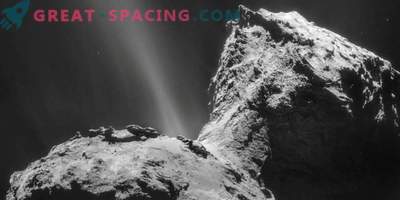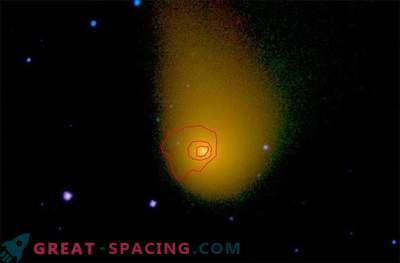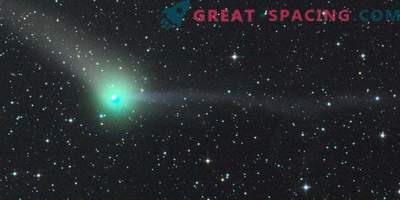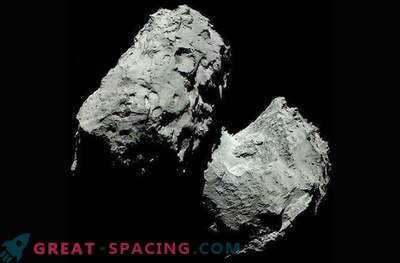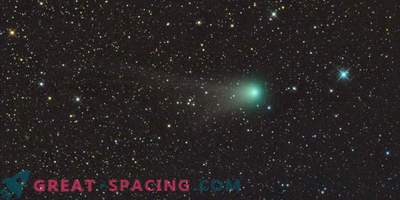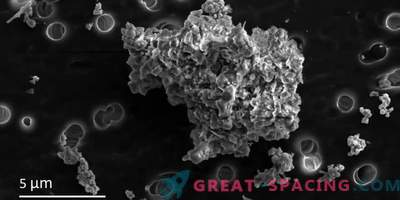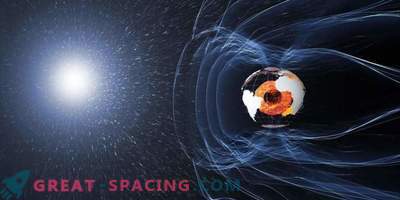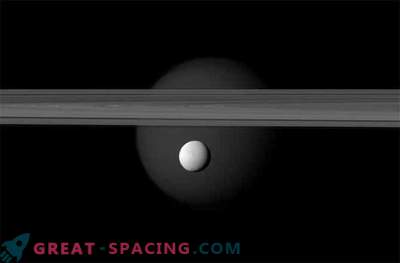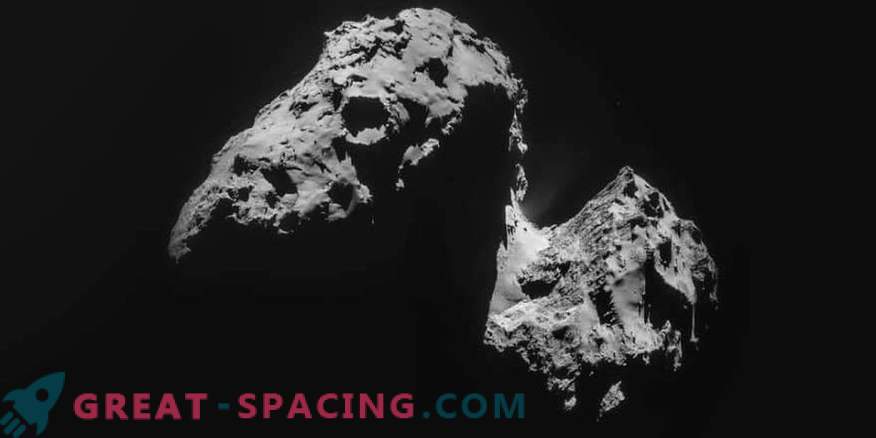
Left: the surface of Comet Rosette. When the object approaches the Sun, the frozen gases evaporate from under the surface, grabbing small dust particles. Right: dust grains can be picked up and checked with a COSIMA instrument. Dust collectors retain dust particles up to 100 microns in size
The dust released by the comet 67P / Churyumov-Gerasimenko consists of about half of the organic molecules. Dust belongs to the oldest and richest carbon material and has not changed since the birth of our system.
COSIMA - a device on the Rosette spacecraft, which investigated comet 67P in 2014–2016. When a comet in a highly elliptical orbit approaches the Sun, it can be considered active: frozen gases evaporate, releasing small dust grains into space. If you catch these grains, you can explore the building materials of the object. Up to this point, only a few missions have been successful.
The list of such is listed and Rosetta. Unlike its predecessors, this mission had 2 years to collect and analyze dust particles of different sizes. For example, Giotto in his passage past the comet 1P / Halley was only able to take a snapshot.
During its mission, COSIMA produced more than 35,000 dust grains, where the smallest reached a diameter of 0.01 millimeter. The tool allowed to observe individual particles in a microscope. At the second stage, the grains were attacked by a high-energy beam of indium ions. Then the secondary ions were weighed and analyzed in a COSIMA mass spectrometer. In a specific study, scientists settled on 30 dust grains. The analysis shows that they are very similar in composition. It turns out that comet dust consists of the same components as the core, so they can be considered in the same way.
The analysis shows that organic molecules are among the ingredients at the top of the list. They allocated 45% of the weight of solid cometary material. So comet mission Rosetta is one of the richest carbon bodies in our system. Approximately 55% belongs to mineral substances, mostly silicates. Surprisingly, these are almost completely non-hydrated minerals (no water compounds).
Of course, there is water in this comet, but it spends most of its life in a frozen state, so it did not react with minerals. The results obtained will influence the study of how life appeared on our planet. Previously, scientists believed that carbon in a comet was a large organic macromolecule. Now it is clear that these compounds constitute a remarkable part of the material of the object. As a result, if comets delivered organic matter to the ancient Earth, they would look like these macromolecules.
